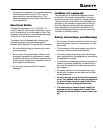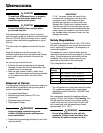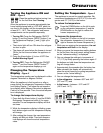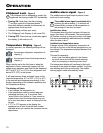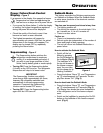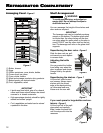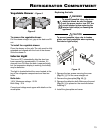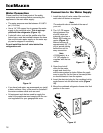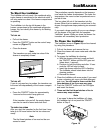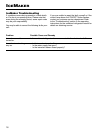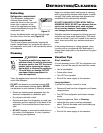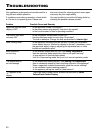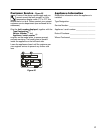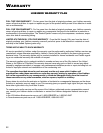
15
FREEZER COMPARTMENT
• Do not salt or season fresh food or blanched
vegetables before freezing. Only lightly salt and
season other food. Some spices can alter their
flavor intensity.
• Do not freeze bottles and cans which contain
carbonated drinks as they might burst. Drinks
can be cooled down quickly, but take the bottles
out of the freezer compartment after an hour at
the most.
• Only take out as much food as needed for thaw
-
ing. Cook food which has been thawed as quick-
ly as possible. Frozen food can be thawed in the
following ways:
- in a microwave oven
- in the refrigerator: the safer way to thaw food
because there is less chance of bacteria
growth. Use this method for high density food
such as roasts or poultry.
- Flat portions of meat or fish can be cooked
when partially thawed.
- Vegetables can be cooked from frozen ( in
half the normal time).
Freezing and Storage
Do Not Freeze:
Lettuce, radishes, grapes, whole apples, pears, and
fatty meat.
Food to Freeze:
Meat, game, poultry, fresh fish, vegetables, fruit,
dairy products, bread, baked goods, pre-cooked
meals.
• Pack frozen food in standard freezer bags or
reusable plastic, metal or aluminum containers.
• Do not allow fresh food which is to be frozen
to come into contact with food already frozen.
Always keep packages dry in order to avoid
them sticking together.
• Always write the date and contents on the pack
-
age and do not exceed the stated storage time
for the food. This prevents spoiling.
• Pack food which you are freezing yourself in
quantities right for your household. To ensure the
food freezes right through quickly, the following
quantities should not be exceeded per package:
- fruit, vegetables: up to 2-1/4 lbs (1 kg);
- meat: up to 5-1/2 lbs (2.5 kg).
• Blanch vegetables after washing and cutting
them. (Add to boiling water for 2-3 minutes,
remove and quickly cool down in cold water. If
you blanch with a steamer or microwave oven,
please follow the operating instructions.)



